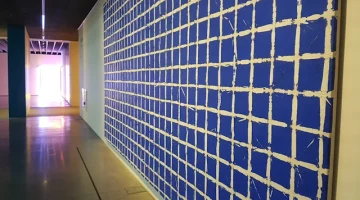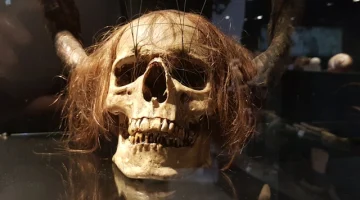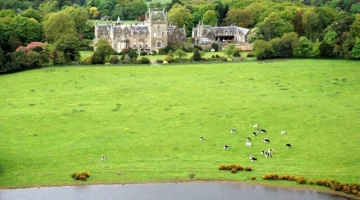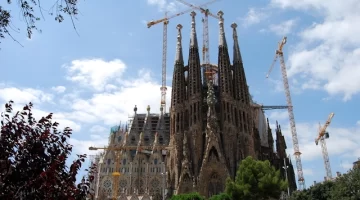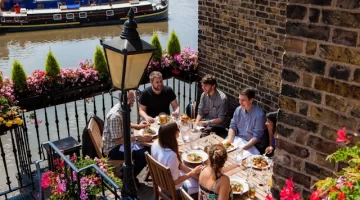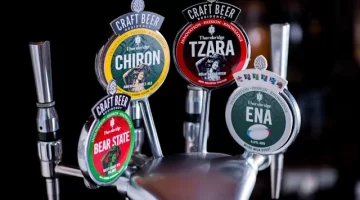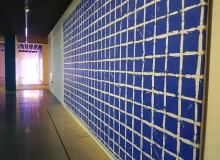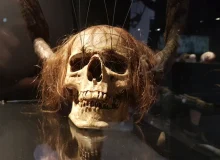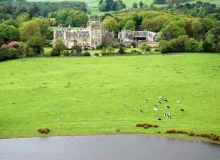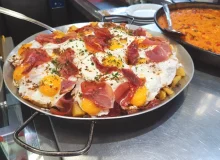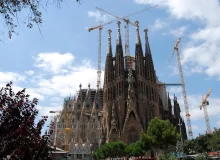The Atarazanas Market in Malaga
The Travel Pages visits the wonderful and historic Atarazanas Market in Malaga, one of the must-see sites for visitors with its colourful stalls & lively bars.

On our visit to Malaga there was one place that was high on our must-see list, and it wasn’t a museum or a monument. It was Malaga’s Atarazanas Market, which has a long history but is very much alive and kicking today.

The Atarazanas is Malaga’s largest market, and we love markets! This one is divided up into areas for butchers, fishmongers, and fruit and vegetable sellers, although there’s a little overlap here and there, and there are also stalls selling things like olives, spices, ice cream and other delights, as well as bakeries, sushi bars, wine bars and other stalls selling food and drink. Many of these have tables outside the market building, where you can sit and have a snack, or a proper meal when lunchtime comes around.
The market is also an important historical building, and its story stretching across Malaga’s history makes it far more than just a place to buy fresh local produce.

The History of the Atarazanas Market in Malaga
The story of Atarazanas begins in the 14th century when Málaga was a thriving port city under Muslim rule. At that time, the Mediterranean shoreline reached much closer to the city center than it does today, making the location ideal for maritime operations.

The word “Atarazanas” itself is derived from the Arabic term al-ṭarazānāt, meaning “shipyard,” and the original structure served precisely that purpose: a naval workshop for building and repairing ships.
This Moorish shipyard was a grand edifice, constructed with the architectural finesse typical of Islamic design—arched entrances, geometric patterns, and a sense of symmetry that reflected both function and beauty. The most iconic remnant of this period is the monumental horseshoe arch that still stands today, now serving as the southern entrance to the market. It’s a rare and evocative portal into Málaga’s medieval past.

From Arsenal to Market
Following the Christian conquest of Málaga in 1487, the building’s purpose shifted dramatically. Over the centuries, it was repurposed multiple times—serving as a warehouse, military arsenal, hospital, and even barracks. Each iteration left its mark, layering the structure with historical significance and architectural adaptations.
By the 19th century, the building had fallen into disrepair. In 1868, the Revolutionary Junta proposed its demolition as part of a public works initiative to create jobs for the city’s impoverished population. The actual demolition was approved in 1870, but not without resistance. The San Telmo Fine Arts Academy intervened to preserve the original Moorish arch, recognizing its cultural and historical value. This act of preservation would later become a defining feature of the market’s identity.

A New Vision: Joaquín Rucoba’s Architectural Masterpiece
In 1870, municipal architect Joaquín Rucoba was commissioned to design a new market on the site. Rucoba, who would later design Málaga’s iconic Alameda Principal and the Cervantes Theatre, approached the project with a historicist sensibility. He sought to honour the site’s Islamic heritage while embracing the industrial aesthetics of the 19th century.

The result was a stunning fusion of styles: the preserved Nasrid arch was placed at the center of the façade, flanked by iron and glass structures that reflected the modernist trends of the time. The building’s iron framework, crafted in Seville, allowed for expansive interior space and natural light—ideal conditions for a bustling marketplace. The market was initially named Mercado Alfonso XII, in honour of the reigning monarch, but the name “Atarazanas” endured, a testament to the site’s enduring legacy.
Stained Glass Mural

We went in at the northern entrance, above which a giant stained glass mural can be seen. Installed during a restoration in the 20th century, this was designed to reflect Málaga’s rich cultural and economic heritage, with vivid scenes that celebrate the city’s maritime, agricultural, and industrial traditions.
Maritime motifs: Ships and waves symbolize Málaga’s historic role as a Mediterranean port.
Agricultural abundance: Grapes, olives, and citrus fruits represent the fertile lands surrounding the city.
Urban life: Elements of Málaga’s skyline and civic pride are woven into the composition.

Entering the Atarazanas Market
When you enter the market it’s hard to know which way to turn, as although it’s laid out on a conventional grid system, there are stalls tempting you in every direction. There is some logicality about it, in that all the fishmongers are together, as are the butcher and then the fruit and vegetable sellers.
In one direction is an ocean of seafood – octopus, lobsters, squid, shellfish, red snapper, prawns, the local specialty sardines, crabs, and anything else you could imagine – and probably a few things you couldn’t.

Apart from the usual things, the butchers display lots of tripe and offal, as well as unidentifiable cuts of meat, and even some sheep’s heads on one stall – or were they goats?

Or Are They Goats?
Dotted in among these stalls are colourful stalls selling spices, stalls specialising in olives or nuts, some selling fresh fruit drinks, a few such stalls, bars serving beer and wine even early in the morning, bakeries offering breakfast snacks, stalls serving fresh fruit juice, and one with pans of fresh paella and the dish known as Broken Eggs: fried eggs and ham on top of a bed of potatoes or French fries.

Bocadillos for Breakfast
On our main visit to the market we had breakfast, munching on ham and cheese bocadillos while wandering round looking at the stalls. We returned a few days later, a Saturday, to have a late lunch Spanish-style at one of the outside tables when the main market stalls had closed. We had to wait a few minutes for a table to clear but then settled into one plate of grilled anchovies (another local specialty, espelos) and one plate of fried squid with plentiful fresh French fries. And, of course, two glasses of cerveza. We could have stayed there all afternoon if another of Malaga’s many museums wasn’t beckoning us.
More Information
The Atarazanas Market is open Monday-Saturday from early in the morning till about 2pm, although the bars and cafes which have tables outside the market building stay open for longer at lunchtime. The official address is Calle Atarazanas 10, which is a side entrance, though there are several entrances around the building.
All photos (c) Mike Gerrard for The Travel Pages.




